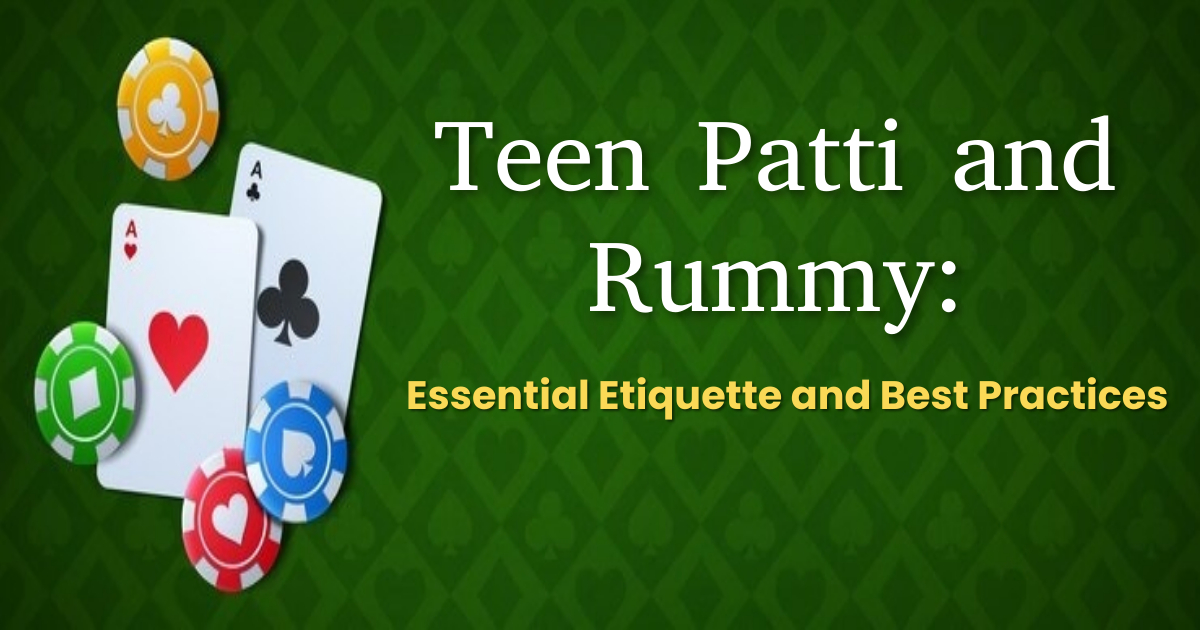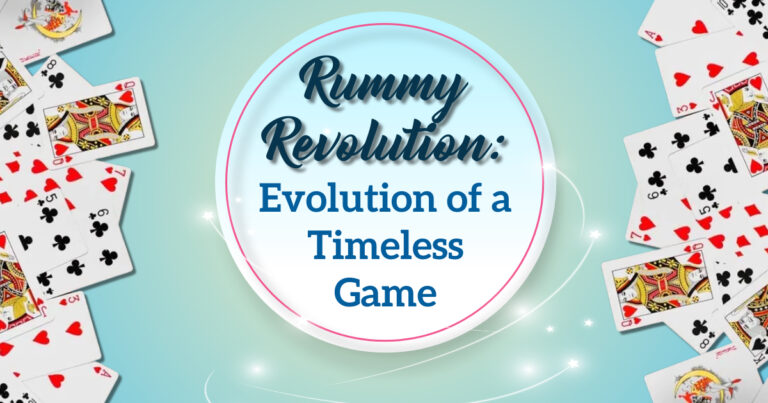Teen Patti and Rummy: Essential Etiquette and Best Practices
Teen Patti and Rummy game are two of the most popular card games in India, enjoyed by people of all ages in various social settings. Beyond just being games of chance and skill, they embody a rich cultural tradition and require a certain level of etiquette and adherence to best practices to ensure enjoyable gameplay for everyone involved.

Understanding Teen Patti
Origin and Popularity: Teen Patti, also known as Indian Poker, traces its roots to traditional Indian card games. It has gained immense popularity not only in India but also among Indian communities worldwide.
Gameplay: Teen Patti is typically played with 3 to 6 players and uses a 52-card deck without jokers. The game revolves around betting and hand rankings, similar to poker. Variations like “Muflis” and “AK47” add layers of strategy and excitement.
Etiquette and Best Practices
- Respect for the Dealer: In Teen Patti, as in any card game, the dealer plays a crucial role. It is essential to treat the dealer with respect and refrain from disputing their decisions.
- Honesty and Fair Play: Maintaining honesty during gameplay is fundamental. Cheating or attempting to manipulate the game ruins the spirit of Teen Patti.
- Mindful Betting: Betting responsibly and within one’s limits is crucial. Avoiding aggressive betting can prevent unnecessary conflicts and ensure a more enjoyable experience for all players.
- Courtesy Towards Opponents: Being gracious in victory and polite in defeat reflects good sportsmanship. Teen Patti often involves high stakes and emotions, making respectful behavior towards opponents vital.
- Avoid Distractions: Concentration is key in Teen Patti. Avoid distractions such as side conversations or electronic devices that can disrupt the flow of the game.
Insights into Rummy
Historical Context: Rummy, a game of melding cards into sets and sequences, has roots in Mexican and Chinese card games. Its adaptation into the Indian context has made it a favorite pastime across generations.
Game Dynamics: Played with 2 to 6 players using decks of 52 cards plus jokers, Rummy involves forming valid sets and sequences. It blends luck and strategic thinking, making it both challenging and rewarding.

Etiquette and Best Practices
- Shuffling and Dealing: Proper shuffling and dealing of cards are crucial to maintaining fairness. Players should shuffle thoroughly and ensure cards are dealt without errors.
- Organizing Cards: Keeping cards neatly arranged helps in quick decision-making during gameplay. It also shows respect for the game and fellow players.
- Discard and Draw: When discarding a card, do so discreetly and avoid revealing your strategy to opponents. Drawing cards should also be done swiftly to maintain the game’s pace.
- Time Management: Rummy requires players to make decisions promptly. Avoiding delays helps in smooth gameplay and prevents frustration among fellow players.
- End of Game Rituals: After a game concludes, it’s customary to count scores accurately and verify them among players. Respectful acknowledgment of the winner and losers is part of good Rummy etiquette.
Cultural Significance and Social Aspects
Both Teen Patti and Rummy transcend their roles as mere card games. They serve as platforms for social interaction, bonding, and even learning. Families, friends, and communities often gather around these games, fostering camaraderie and shared experiences.
Family Traditions: Many Indian families pass down the traditions of playing Teen Patti and Rummy across generations. Elders teach younger members not only the rules but also the etiquette and values associated with these games.
Social Cohesion: Playing Teen Patti and Rummy fosters a sense of belonging and community. They provide opportunities for people to unwind, converse, and connect on a deeper level than everyday interactions allow.
Educational Value: Beyond entertainment, Teen Patti and Rummy enhance cognitive skills such as strategic thinking, pattern recognition, and decision-making under uncertainty. These skills are valuable in various aspects of life.
Conclusion for Teen Patti and Rummy
In essence, Teen Patti and Rummy are more than games—they are cultural touchstones that bring people together while teaching valuable life lessons in etiquette, strategy, and social interaction. By adhering to the essential etiquette and best practices outlined, players can ensure that these games continue to be enjoyed respectfully and enthusiastically by all participants, preserving their rich heritage for future generations to cherish and uphold.








